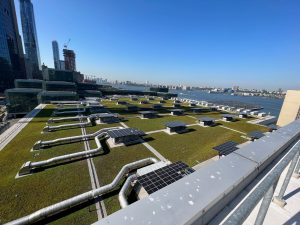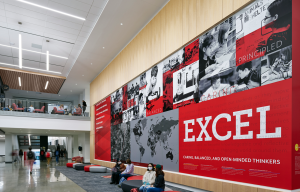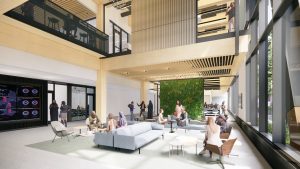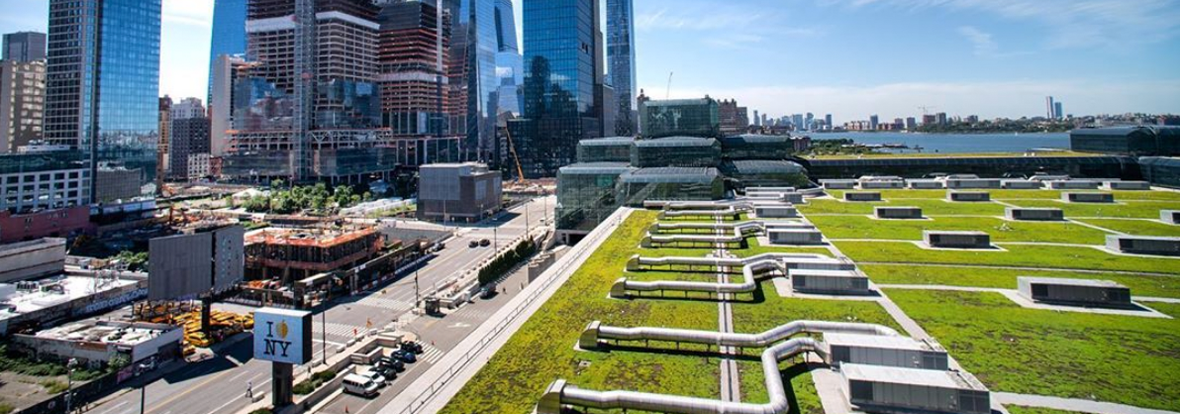According to architecture2030.org, buildings alone contribute around 40 percent of carbon emissions worldwide; however, in large cities such as New York, London, or Toronto, these emissions may rise to 70 percent or more. While climate change is largely rooted in the carbon that results from energy use, it does not stop at the gas pump, the light switch, or even our thermostats.
Building emissions can be broken up into two distinct types: operational carbon and embodied carbon. Operational carbon is derived from the buildings’ day-to-day operations. This may include the temperatures the building is being heated or cooled, how the building control responds to changes in occupancy, or how efficient the building’s mechanical systems are. Embodied carbon represents carbon embedded in the materiality of the building itself and emitted during the construction process. These embodied emissions refer to the aggregated total carbon associated with the manufacture, transport, installation, maintenance, and other processes employed to produce the materials and construct the building.
As a company, Gilbane is moving the needle forward and advancing the solutions to help reduce both operational and embodied carbon with the goal of reducing overall carbon emissions produced by the built environment. We are proud to contribute to some of the most sustainable projects in the nation. Below are examples of current and completed projects that illustrate our commitment to sustainable innovation in the built environment and show a few of the steps we are taking to address both operational and embodied carbon on our projects.
Jacob Javits-Solar Renewable Energy & Battery Energy Storage
Gilbane is providing construction management at-risk services for the Jacob Javits Convention Center Solar Renewable Energy and Battery Energy Storage project. This project, which is the largest single-rooftop solar array in New York City, includes:
- A green roof that powers onsite solar production, significantly reducing the building’s operational carbon.
- The single-rooftop solar array can power 710,000 homes across the state.
- Once completed, the combination of battery storage and onsite solar energy production will allow the convention center to act as a microgrid, taking advantage of emission-free energy with no immediate environmental impacts.
- We are coordinating with the National Audubon Society to work around protected seagull nesting zones on the green roof during construction.
Falls Church George Mason High School
With design partners Stantec/Quinn Evans Architects, Gilbane provided design-build services for a new flagship high school, Meridian High School. The LEED Gold certified, and Net-Zero ready school includes:
- Geothermal wells heating system that uses heat from the Earth to dramatically decrease energy usage and reduce carbon emissions.
- An advanced lighting and occupancy control system helps the building reduce the amount of energy being directed to unused.
- Bioretention beds, ponds, and large water storage tanks allow stormwater to be slowly released and provide irrigation to the building’s landscaping, providing additional stormwater runoff protection.
- The Net-zero ready design allows the building to improve its energy use overtime continually.
- An all-LED lighting and automated lighting control system, accounting for the natural light the building would receive.
- Utilization and placement of flowers and trees to prevent stormwater runoff.
University of Pennsylvania School of Engineering and Applied Science
Gilbane is providing preconstruction and construction services for the tight urban infill of University of Pennsylvania’s School of Engineering and Applied Science (SEAS) Amy Gutmann Hall. Set to be complete in 2024, this project has several unique features:
- The use of mass timber will reduce the building’s carbon footprint by 52% relative to concrete and 41% relative to steel.
- This project marks the first mass timber building in Philadelphia.
- Because wood is the only material that removes carbon from the atmosphere, carbon is effectively locking it into the structure of the building.
Gilbane has committed to net-zero carbon emissions in our operations, zero waste to landfill, and a 40 percent reduction in water usage by 2040. As the demands around the problem of climate change continue to evolve, we at Gilbane will be proactive and provide the needed leadership that has become a hallmark of our operations for the past 150 years.

